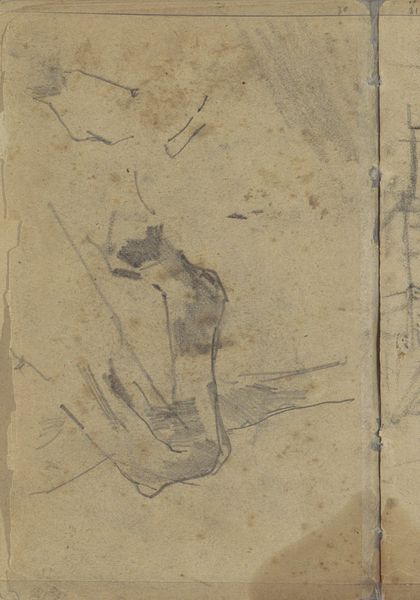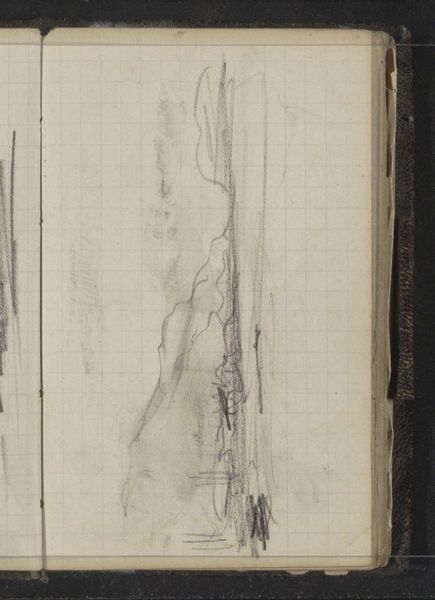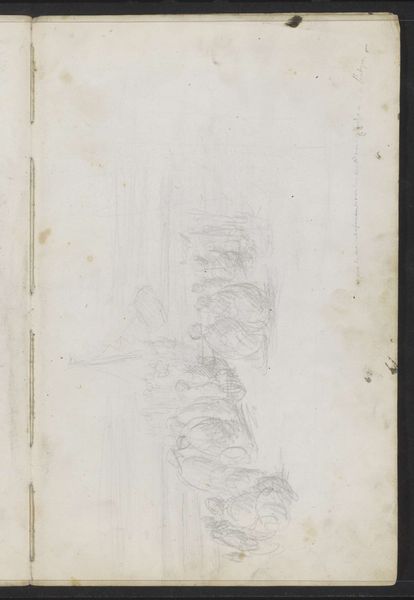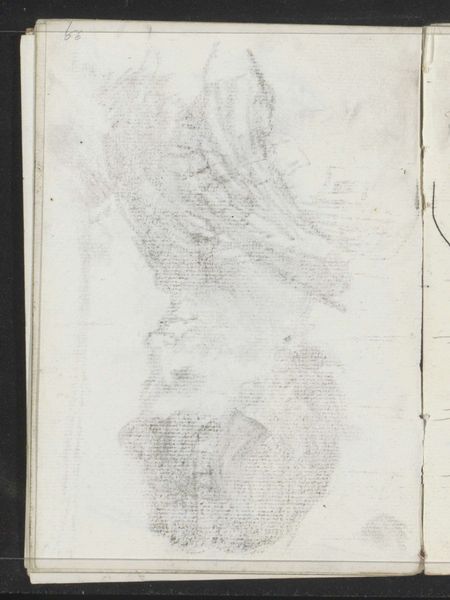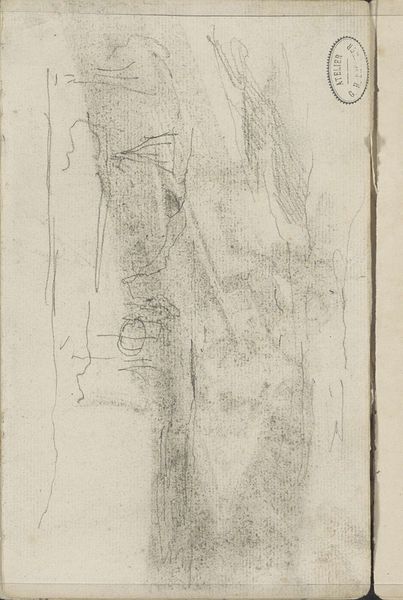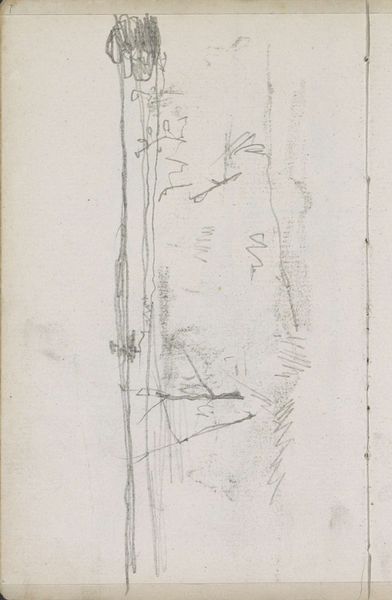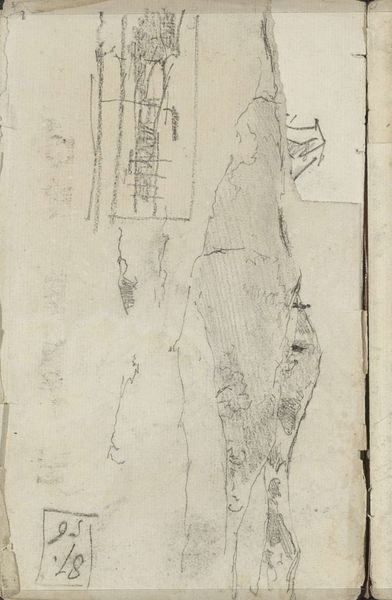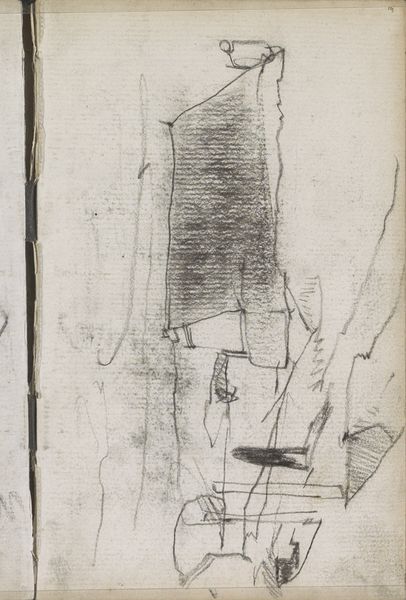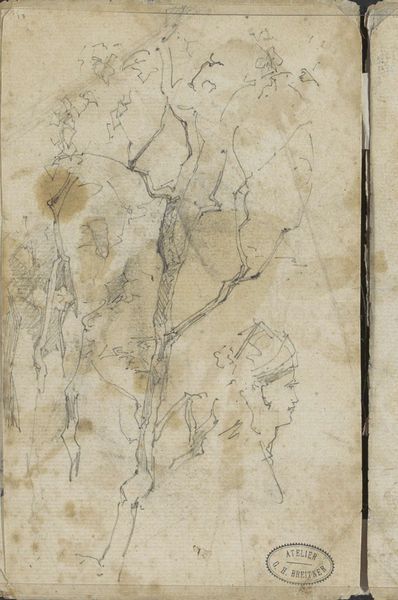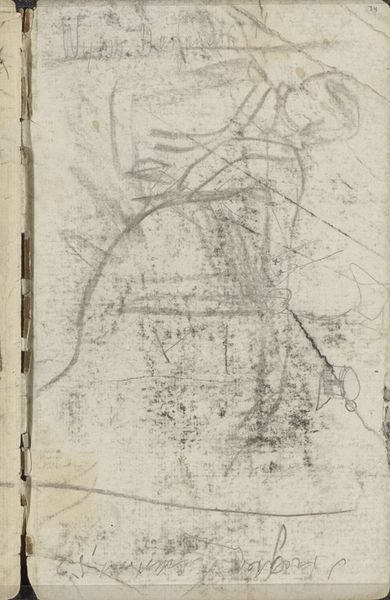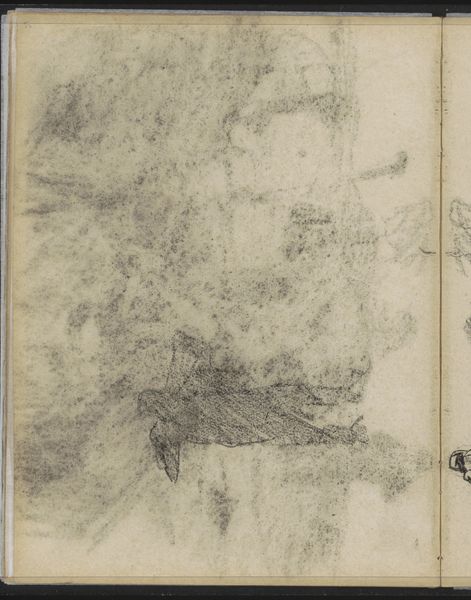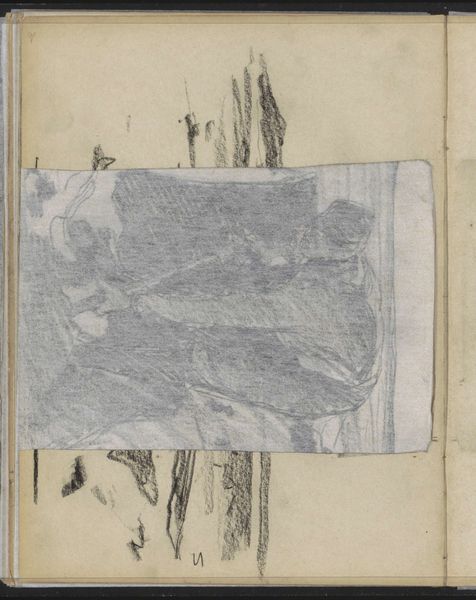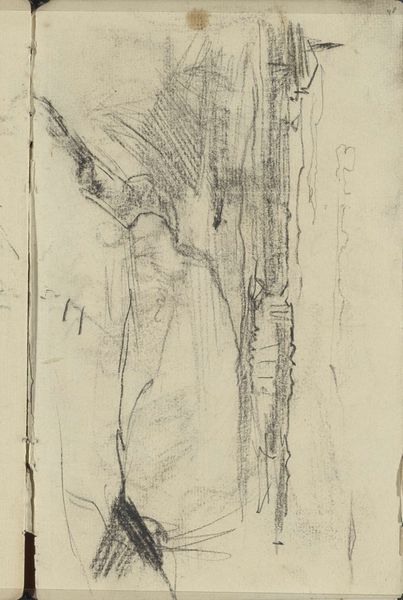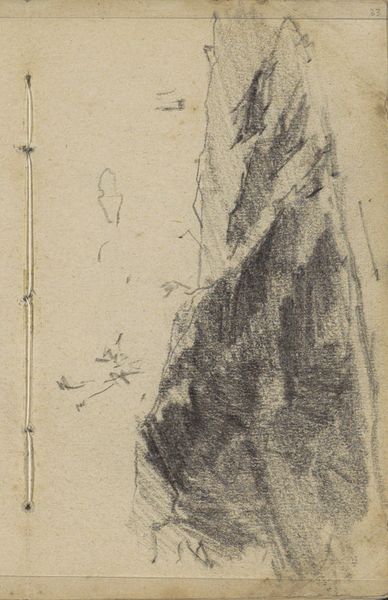
drawing, paper, pencil
#
drawing
#
impressionism
#
sketch book
#
landscape
#
paper
#
pencil
#
sketchbook drawing
#
sketchbook art
#
watercolor
#
realism
Copyright: Rijks Museum: Open Domain
Editor: Here we have Breitner's "Duinlandschap en eenden," created between 1884 and 1886. It’s a pencil drawing on paper, and the rough, sketchy quality makes it feel very immediate, like a glimpse into the artist's working process. What catches your eye about it? Curator: It is the linear articulation and the relationship between the varying densities of pencil strokes and the blank space that structures my reading of this sketch. Consider the strategic use of line to delineate form, particularly how the layering creates depth despite the flattened perspective typical of sketchbooks. How do you perceive this interplay? Editor: I see it, especially in the way the thicker lines define the contours, but it feels like more than just defining the shape. Like, the sketchiness also suggests movement. What do you make of the composition? Curator: Indeed. Observe how Breitner deploys compositional strategies to organize the visual field. The vertical orientation directs the viewer's gaze upward. Moreover, consider the tonal gradations achieved through varying pencil pressure. How does the textural richness invite tactile interaction? Editor: It’s almost like I can feel the wind and the sand just by looking at it, even though it’s just pencil on paper. Curator: Precisely. Notice the paper itself—it's not merely a ground but an active participant. Its grain interacts with the pencil, complicating the visual texture. Consider, also, how the light reflecting off different areas interacts with these marks. How does that play with our understanding of form? Editor: It's interesting to think about the paper itself contributing to the texture of the artwork and informing Breitner's work. It all seems more intentional than it initially appeared. Curator: The seemingly simple is often the most rigorously constructed. The interplay between medium, mark-making, and spatial organization allows the sketch to transcend its status as preliminary work, attaining a powerful visual dynamic of its own. Editor: Thanks; I’m definitely seeing this sketch in a new light now.
Comments
No comments
Be the first to comment and join the conversation on the ultimate creative platform.
